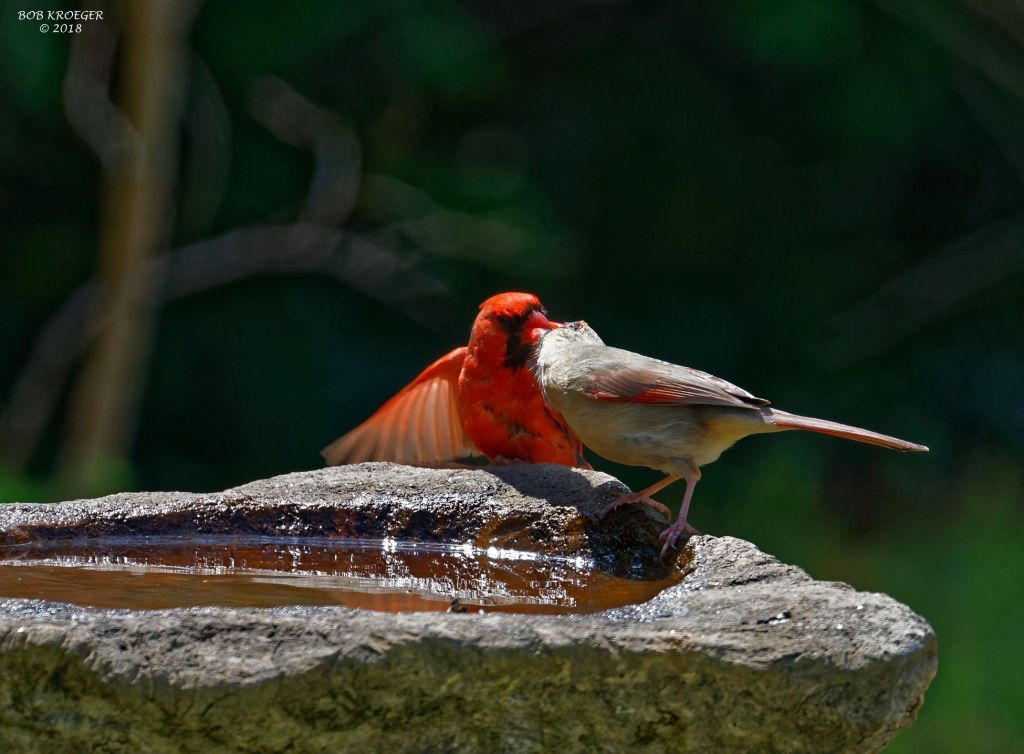
23 August 2020
Many birds look ragged right now because they’re molting. July and August are the perfect time to replace worn feathers because the breeding season is over, food is plentiful and they aren’t traveling on migration. The cardinal below looks moth-eaten because he’s molting his body feathers.
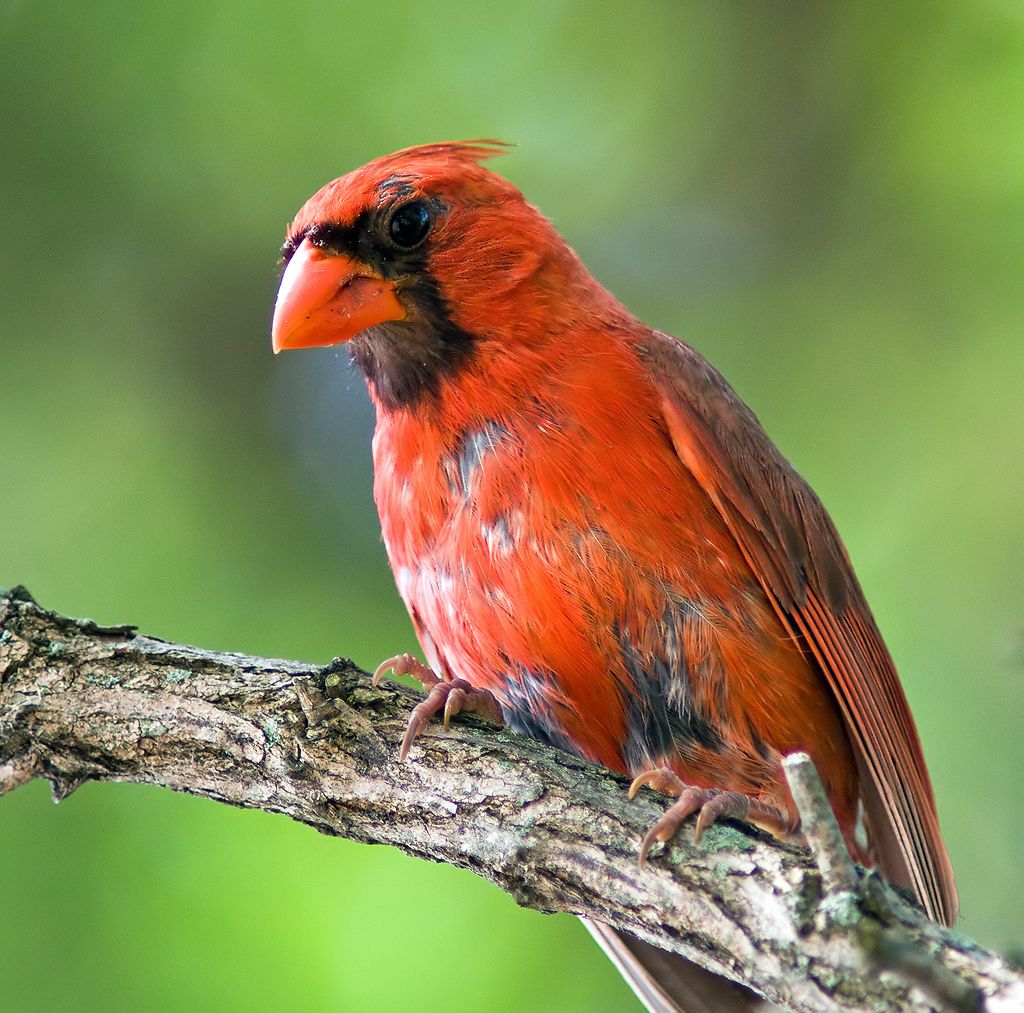
What a red bird eats while he’s molting affects his feathers. Red feathers get their color from carotenoids in food so a diet rich in carotenoids makes a cardinal brighter for the coming year.
Bush honeysuckle, though invasive, is a good source of carotenoids. Unfortunately it’s not as nutritious as our native berries.
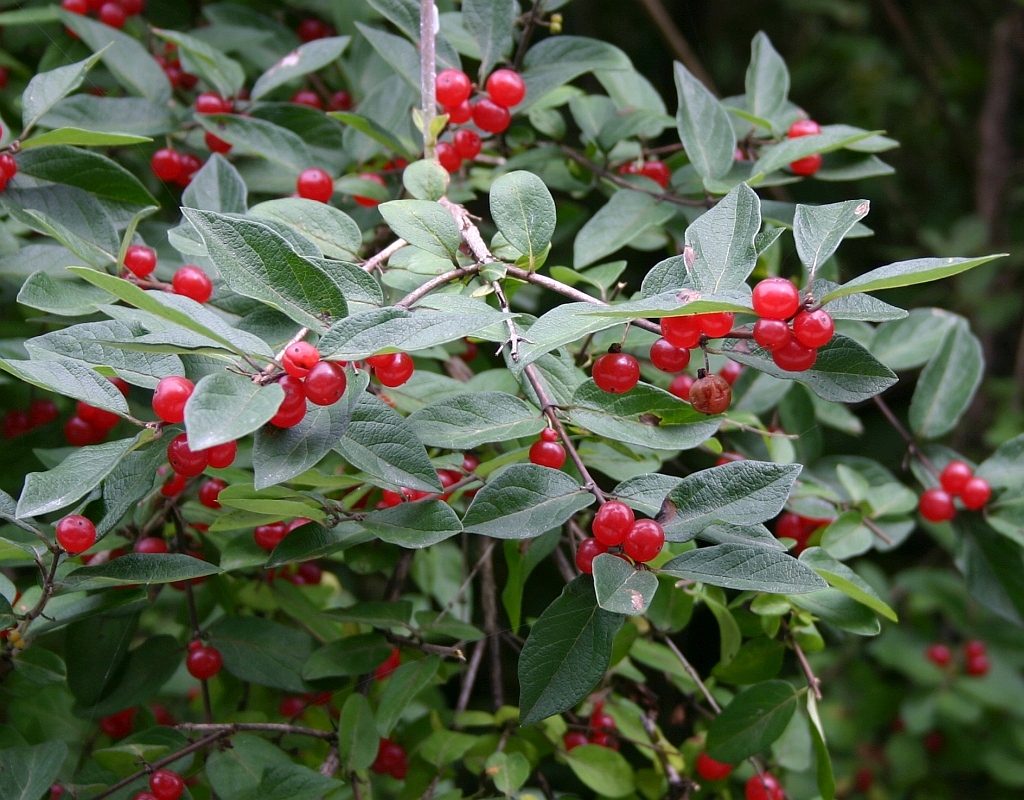
This bright red cardinal is eating American beautyberry (Callicarpa americana). The redder he is, the better the ladies like him.
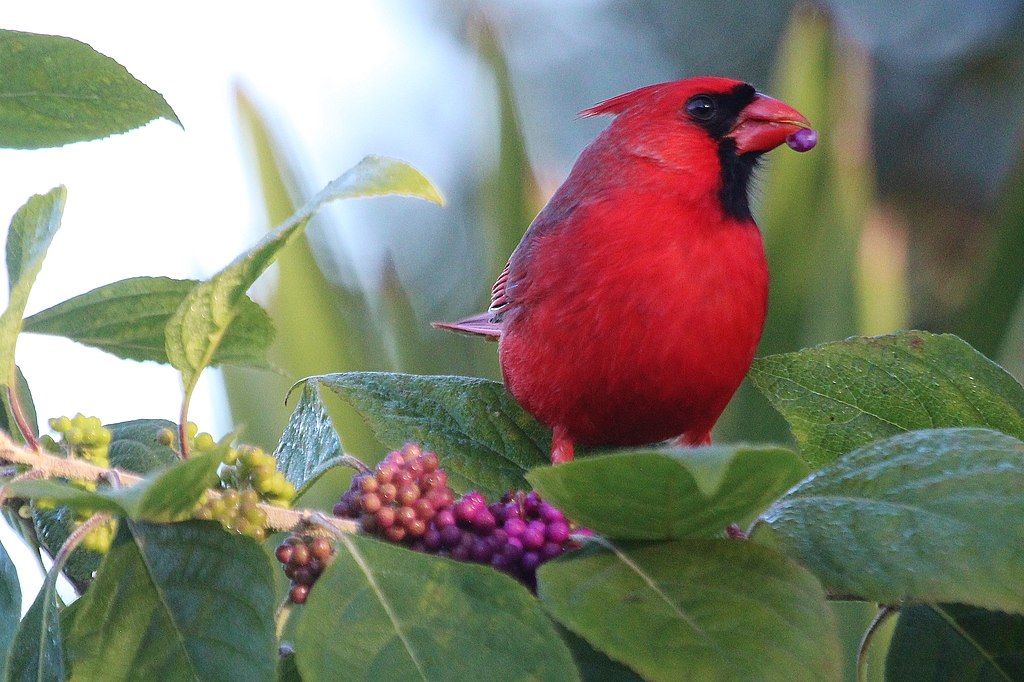
This dull colored cardinal must have missed the red berries last summer.
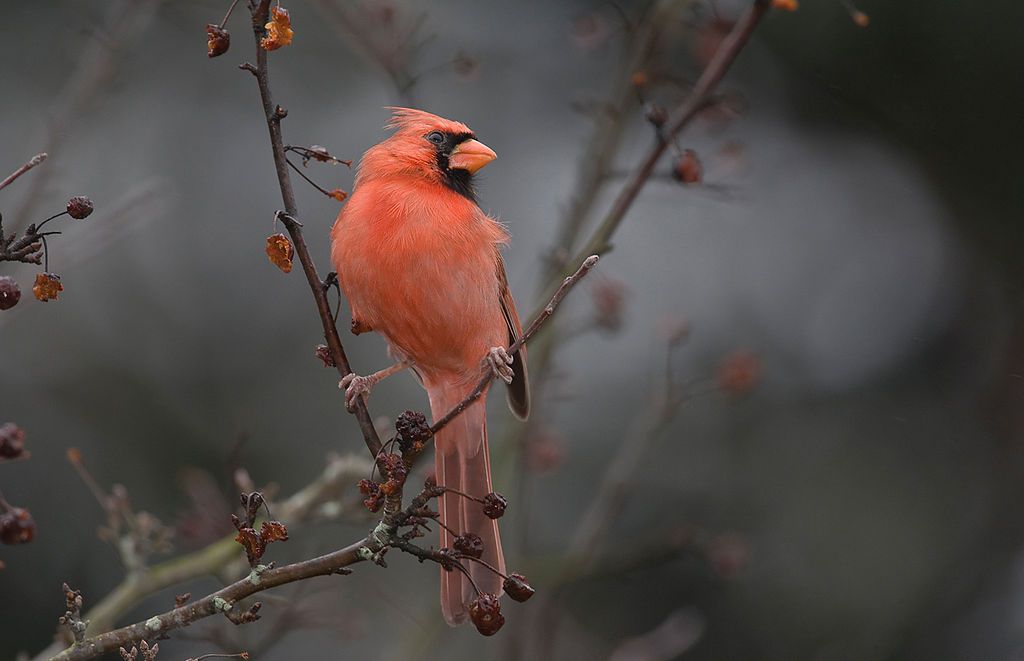
House finches have a more obvious response to nutrition while molting. Finches without enough carotenoids produce orange feathers instead of red. In Marcy Cunkelman’s photo below there’s an orange house finch on the right, a red one on the left.
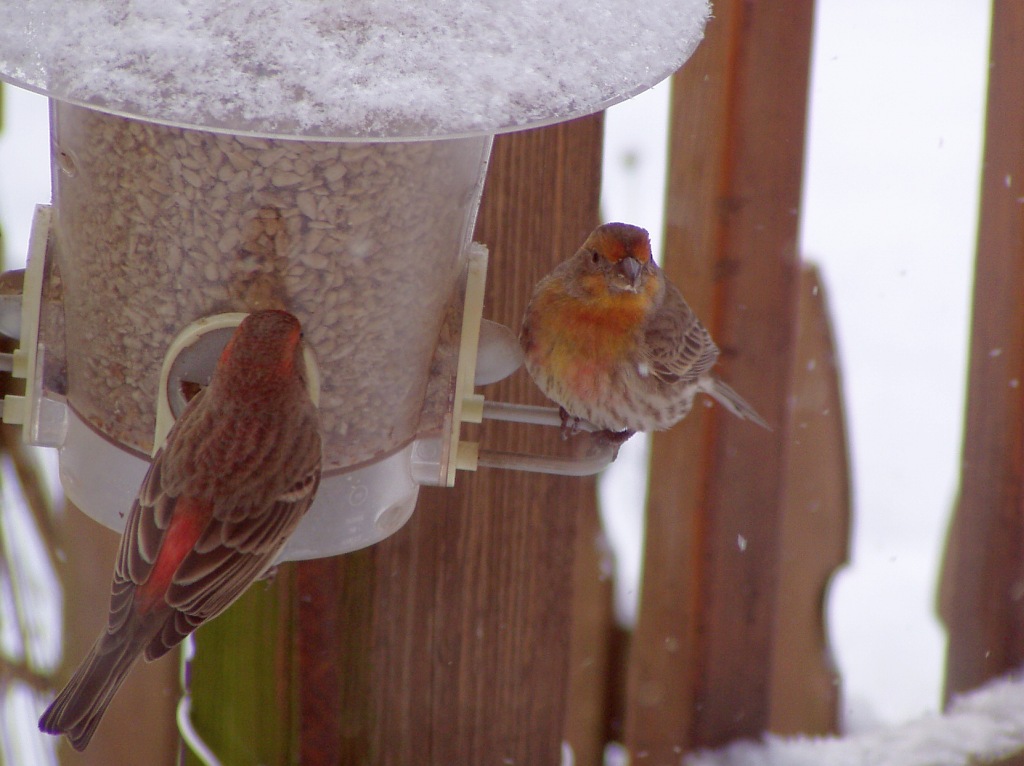
You are what you eat.
(photos by Bob Kroeger, Marcy Cunkleman, Kate St. John and from Wikimedia Commons)
Being a bird novice, I wonder if you could elaborate on the molting process. The article describes a cardinal in a photo as appearing moth-eaten, because he is molting “body feathers”. Do birds ever “molt” wing feathers?
Craig, birds molt all their feathers but their wings are so important that they often molt those feathers at a different time of year. For instance, female peregrine falcons mot their wing feathers while they are incubating (April) and body feathers in August. Female peregrines they don’t have to fly much in April while their mates are supplying food. Even so, most birds molt only 2 wing feathers at a time — the exact same feather on both wings — so that they can still fly and are still balanced in flight. Ducks and geese such as Canada geese and eiders use a different strategy. Since they are safe on the water, they molt all their wing feathers at once and have a flightless period every year during which they stay on/close to water.
Hi Kate,
Thanks for the interesting information!
Your blog never ceases to delight, educate, inform and pique my curiosity!
Craig